Moths of the Lower Rio Grande Valley
LRGV Specialty Moths - Carpenterworms, Crambids, & Pyralids
These are moths that (according to the Moth Photographer's Group) are only found in the Lower Rio Grande Valley.
Disclaimer: This collection is
not comprehensive!
Carpenterworms
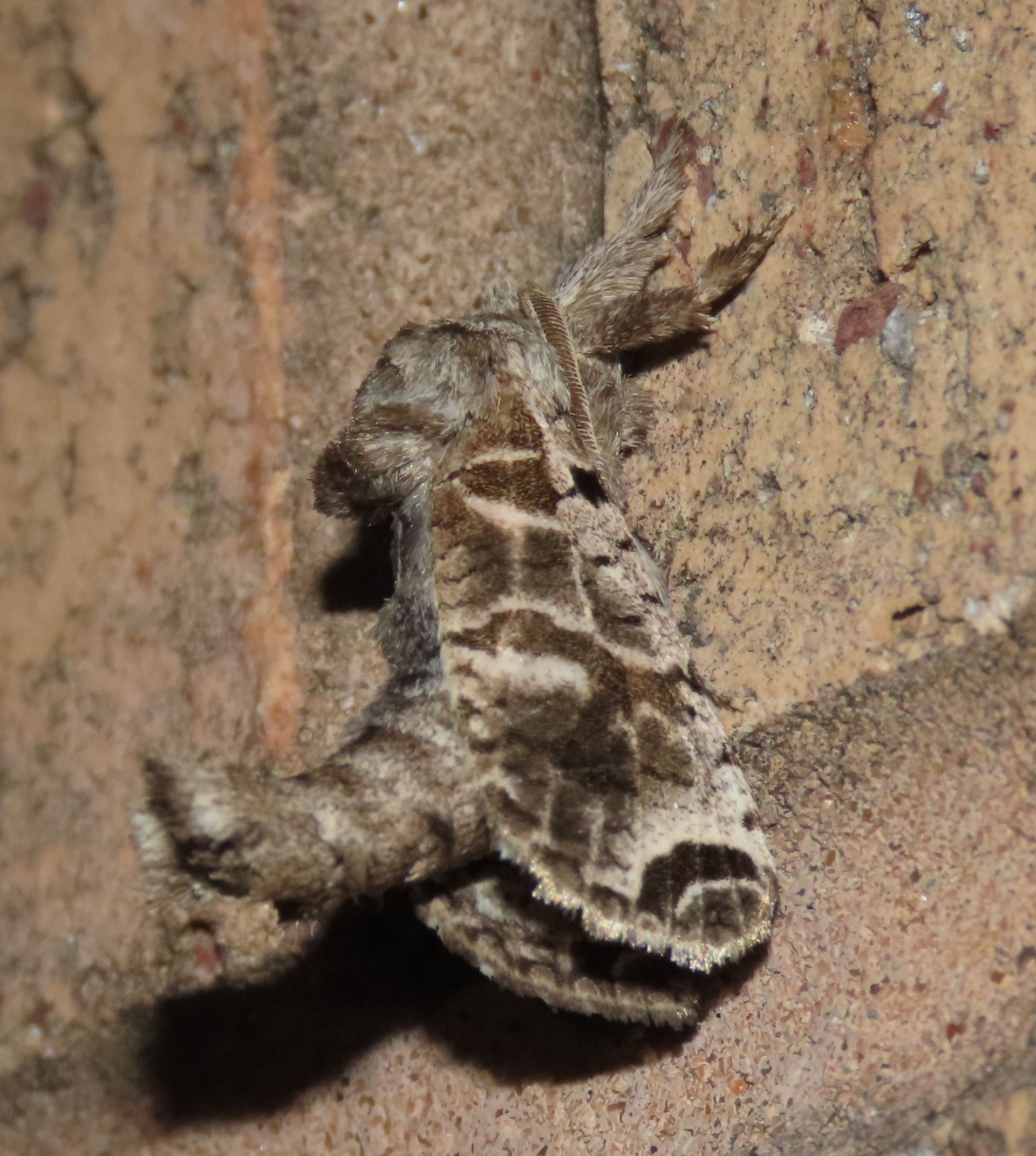
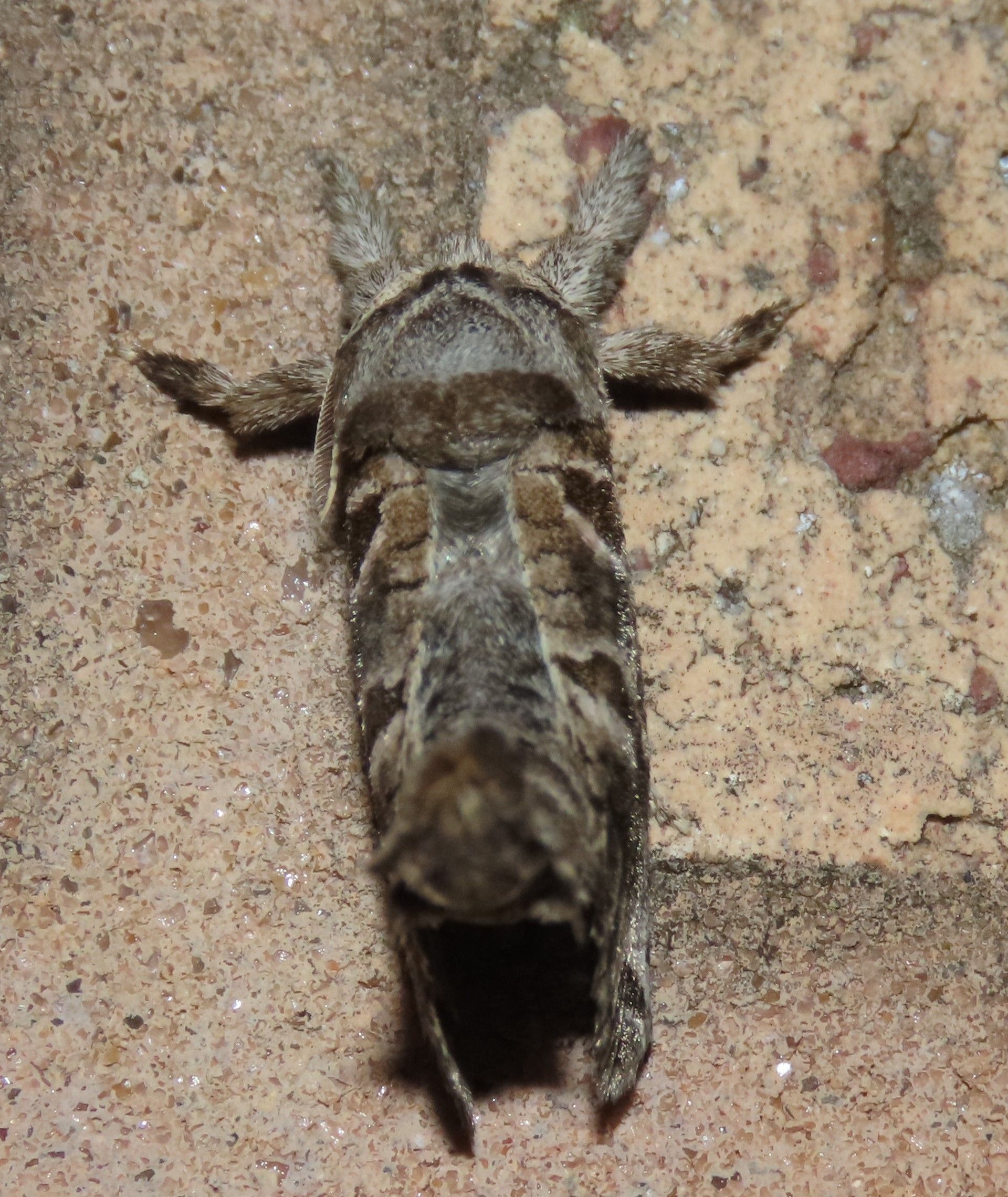
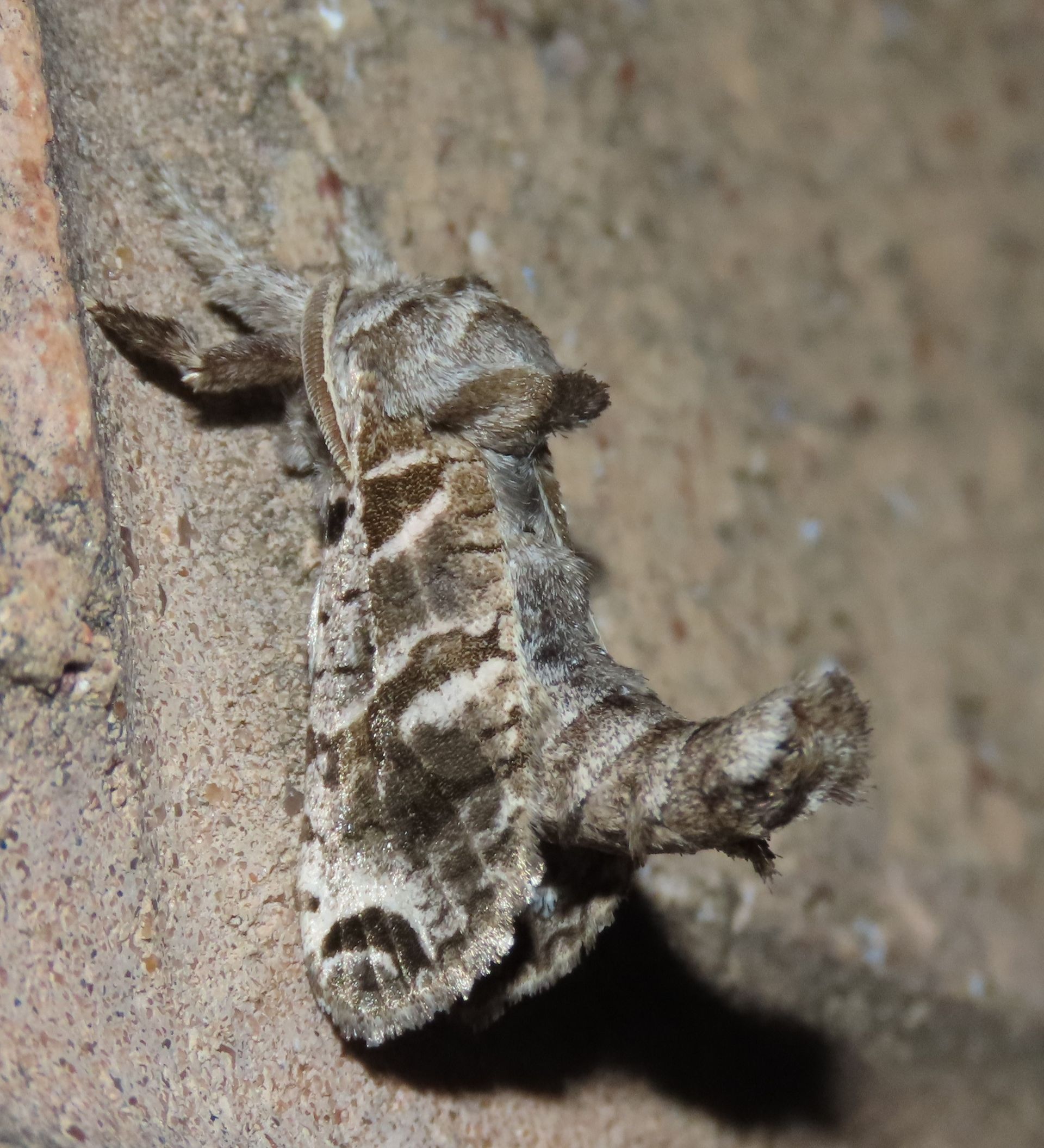
Arrow-marked Carpenterworm (Inguromorpha arcifera)
This distinctively-marked moth has three irregular dark bands on the forewing that are broadly outlined in cream. Seen once in June at Resaca de la Palma State Park.
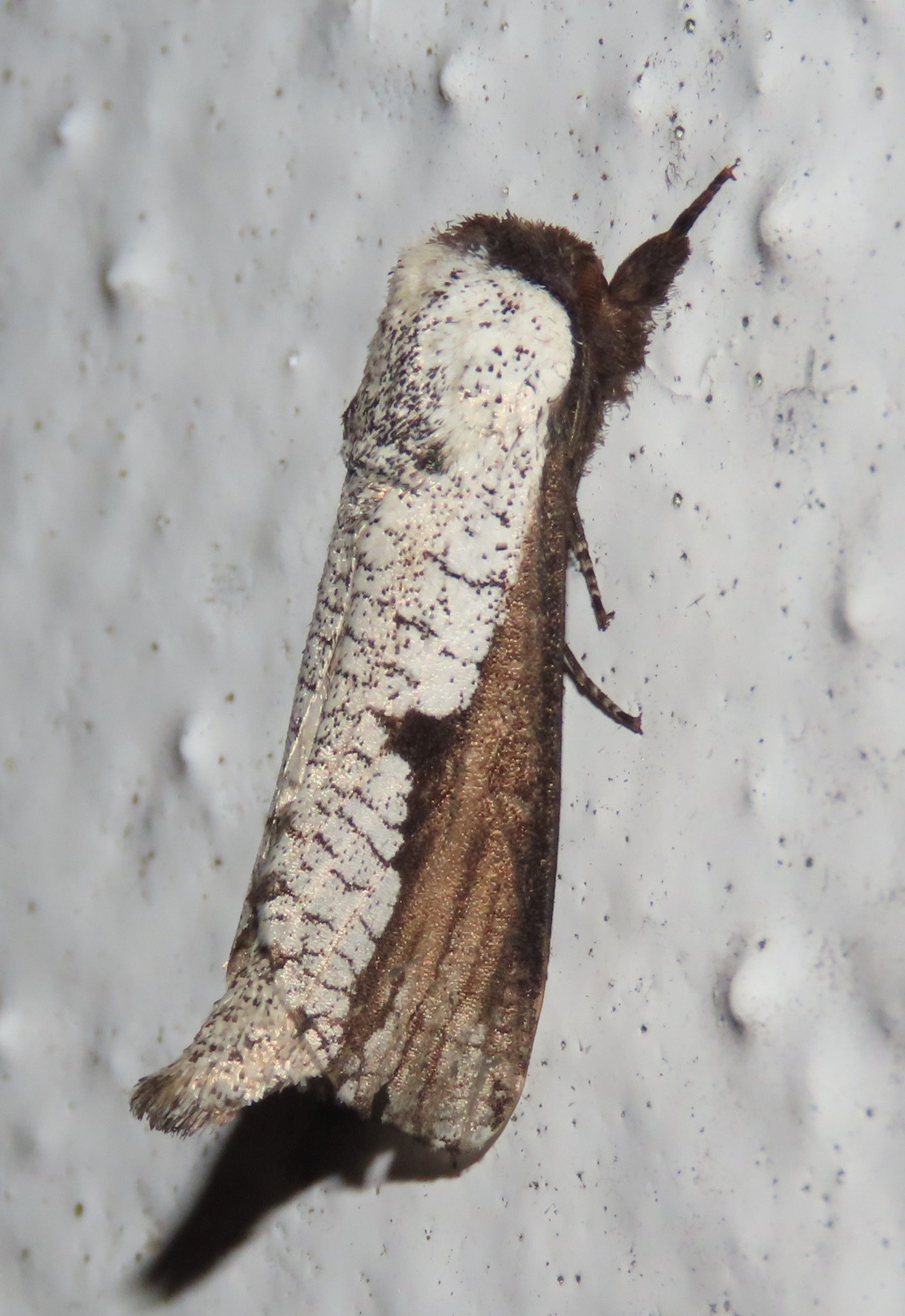
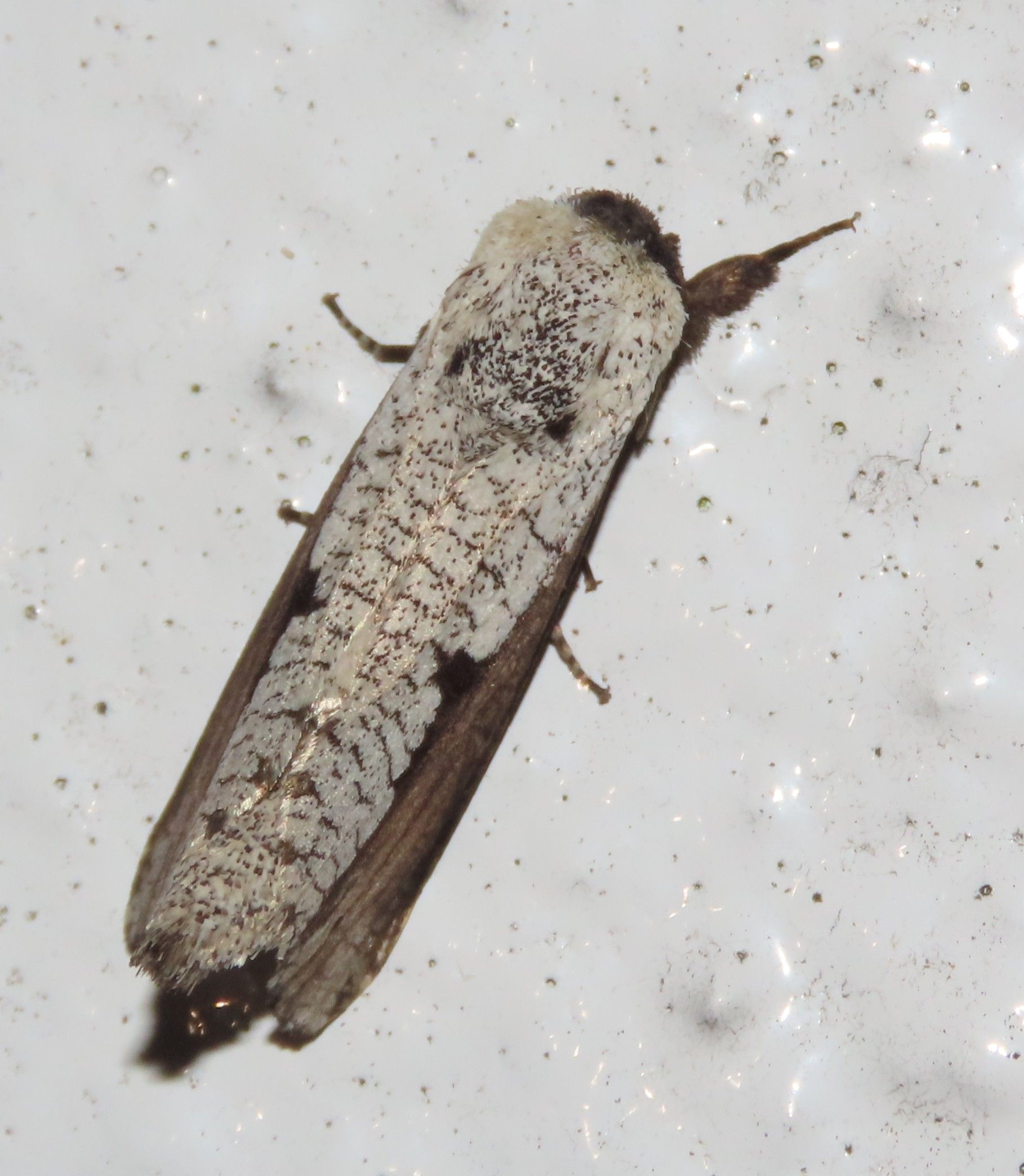
Ramosa Carpenterworm (Brypoctia [Aramos] ramosa)
This strikingly bicolored moth stands out on a wall (like this one) but blends in cryptically on a tree spotted with white lichen! The entire leading edge of the forewing is black, unlike the similar Mason's Carpenterworm (below). Recorded once at the Laguna Vista Stripes (yes!) in August.
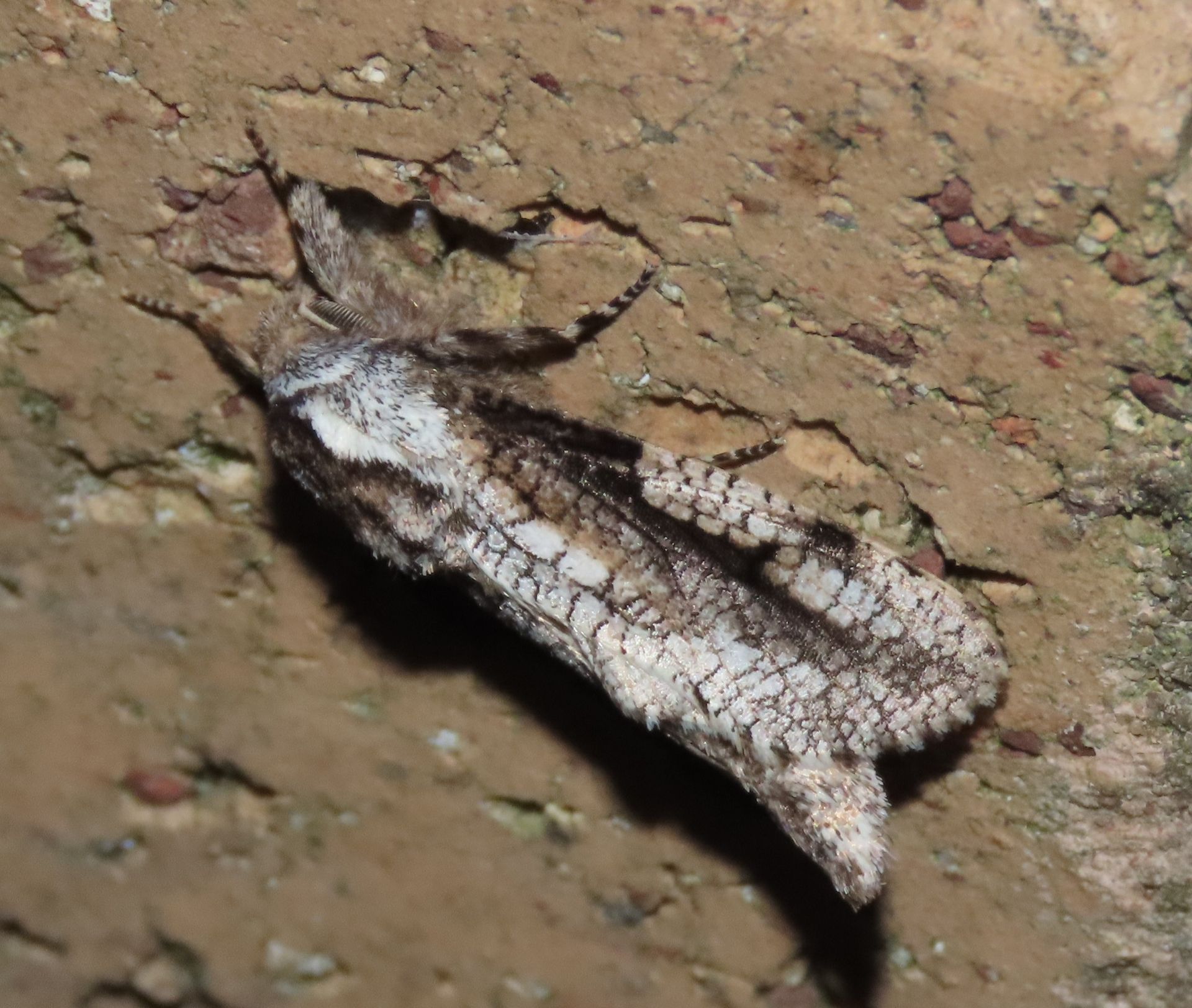
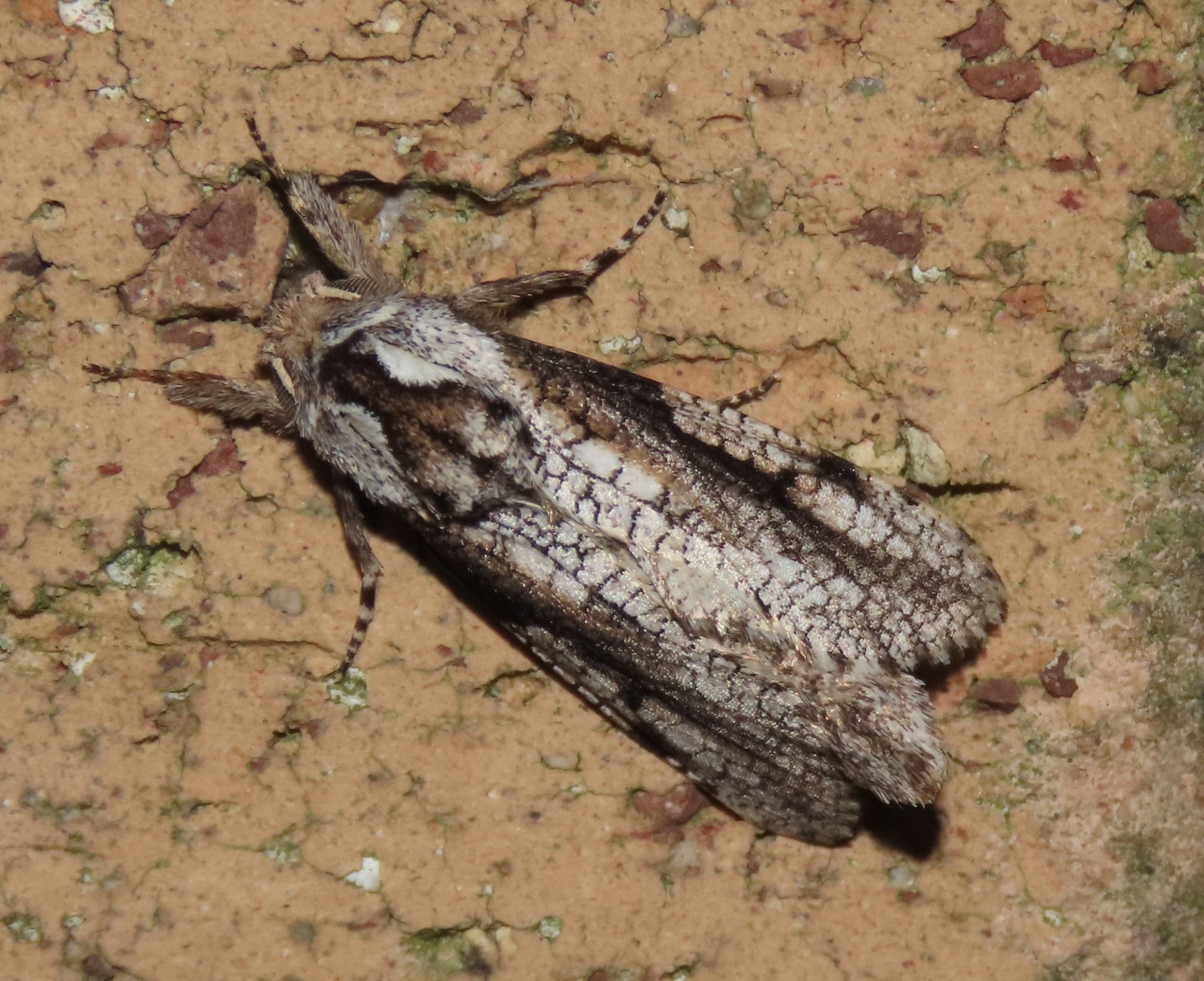
Mason's Carpenterworm (Psychonoctua masoni)
This scaly carpenterworm has a bold black streak starting at the upper end of the costa and running up and away through the center of the forewing. The similar Ramosa Carpenterworm (Brypoctia ramosa, not personally recorded yet) has a thick black streak that runs the length of the costa. Recorded once in June at Resaca de la Palma State Park.
Crambids
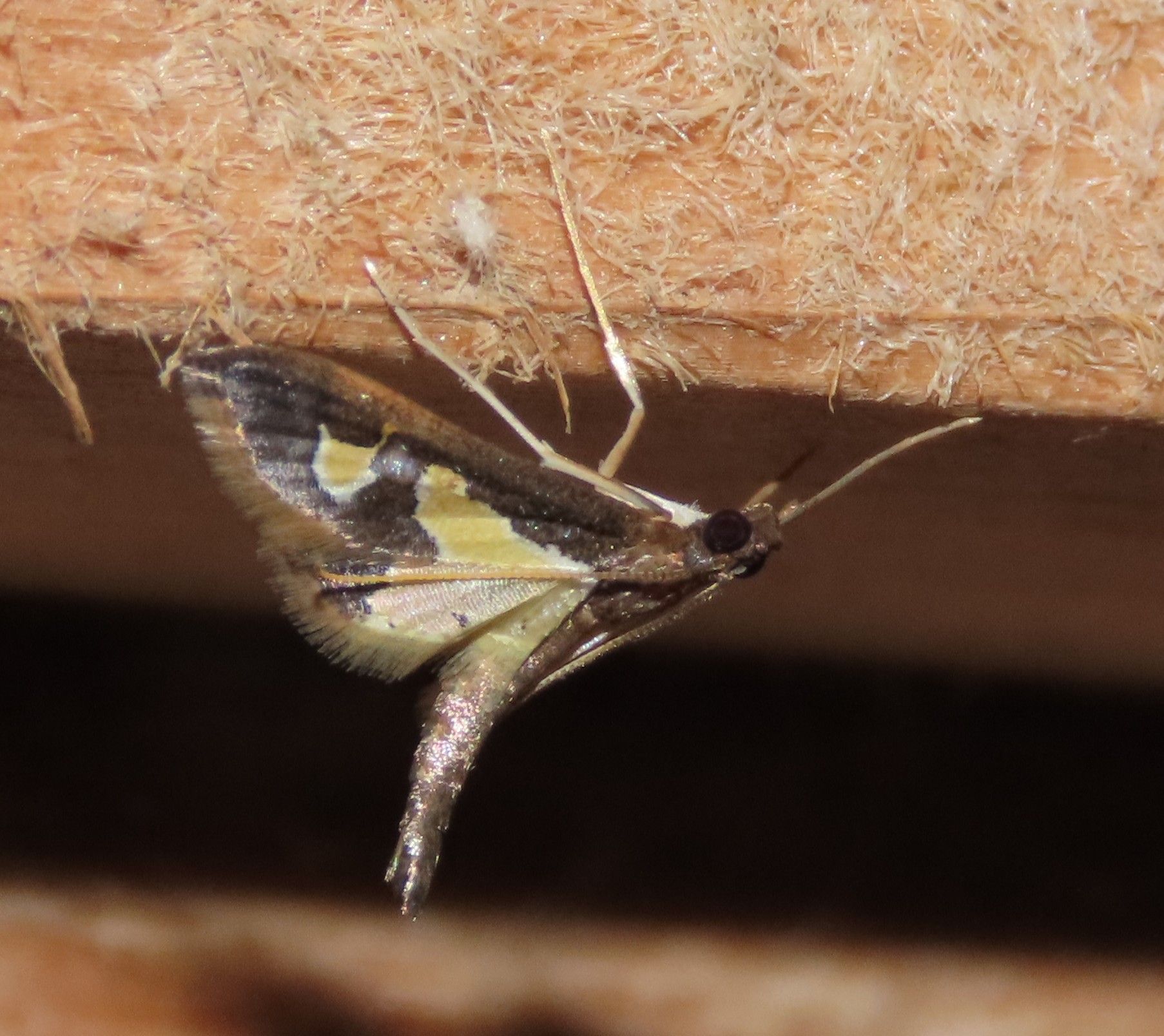
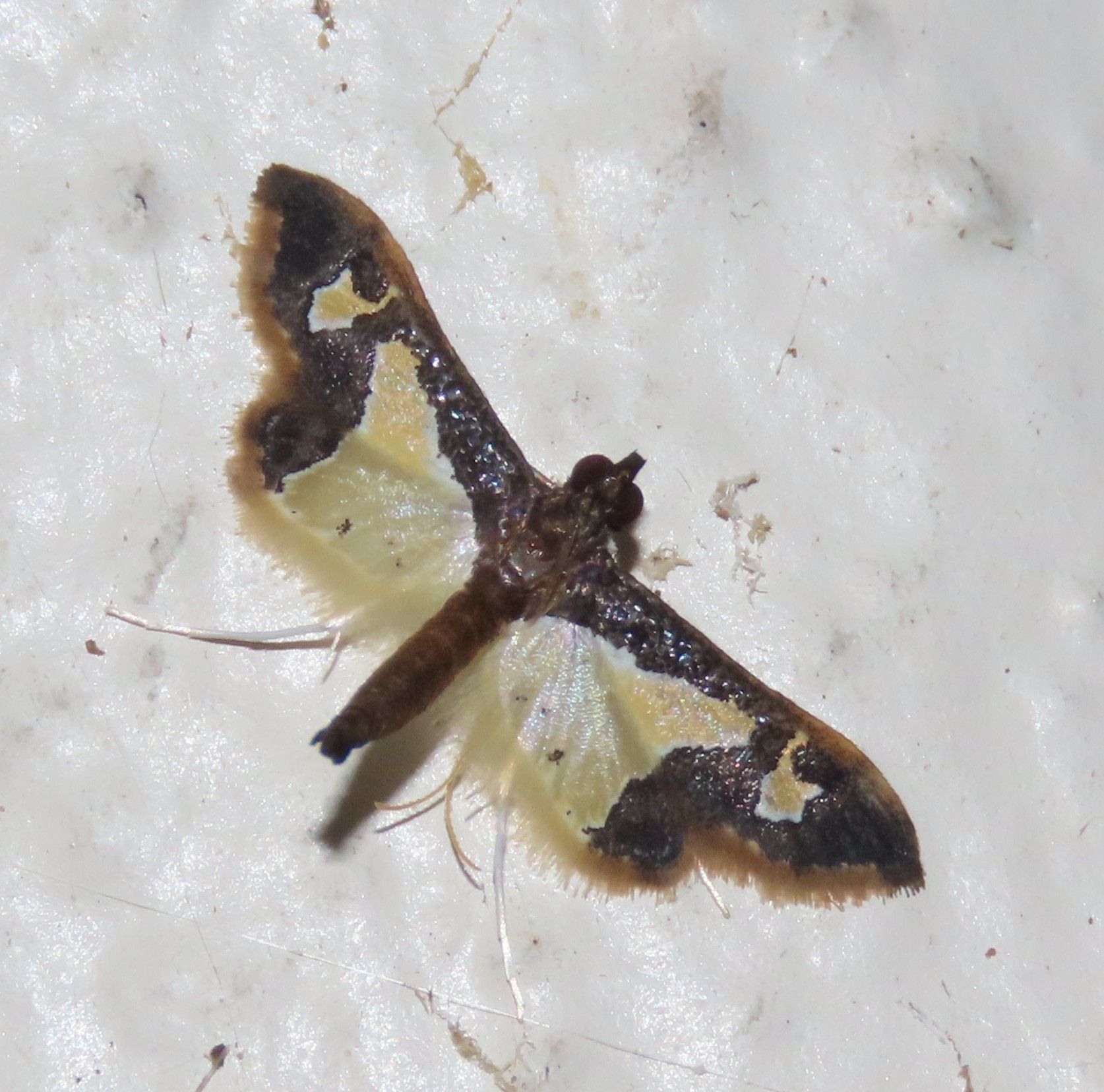
Sabinal Gonocausta (Gonocausta sabinalis)
This spindly little moth often holds its wings at an upward angle, accentuating the long abdomen. The Syllepsis Moth (Syllepis hortalis), another LRGV specialty not personally recorded yet, is similar, but the wings are mostly yellow with two large brown blobs, whereas the Gonocausta is somewhat the opposite: mostly brown with large yellow wedges in the wings (if you use your imagination, the wedges look rather like a cat peeking at you). Recorded June to November, with records in January. Also recorded along the Coastal Bend.
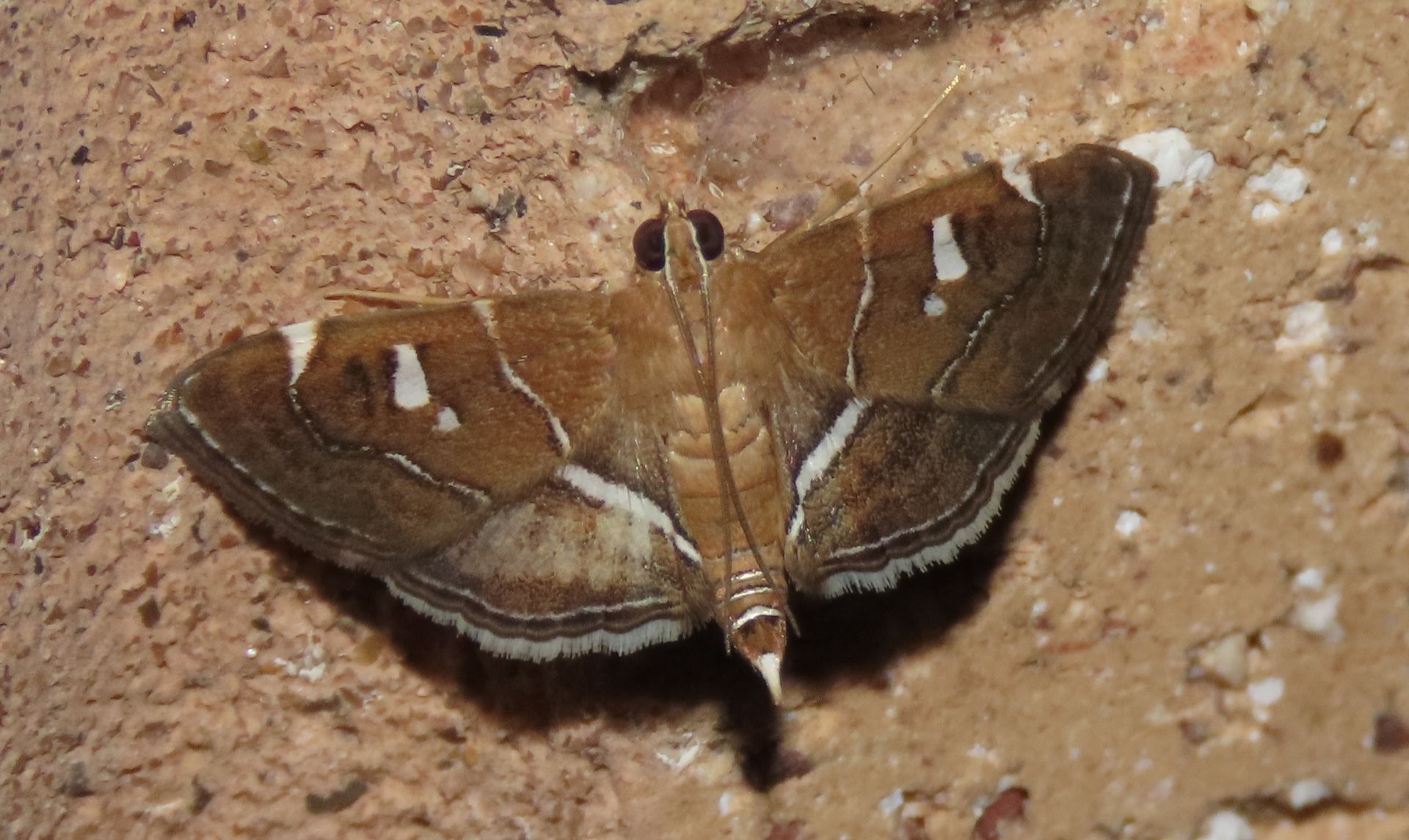
Wide-banded Lamplighter (Lamprosema canacealis)
The three Lamprosema moths that occur in the LRGV are virtually identical, and even this ID is tentative based on the fact that the hindwing median band is a bit thicker than in the other two species (and even this "field mark" has not been codified by the experts - it's simply a personal observation). If correctly ID'd, this one record was in June at Resaca de la Palma State Park.
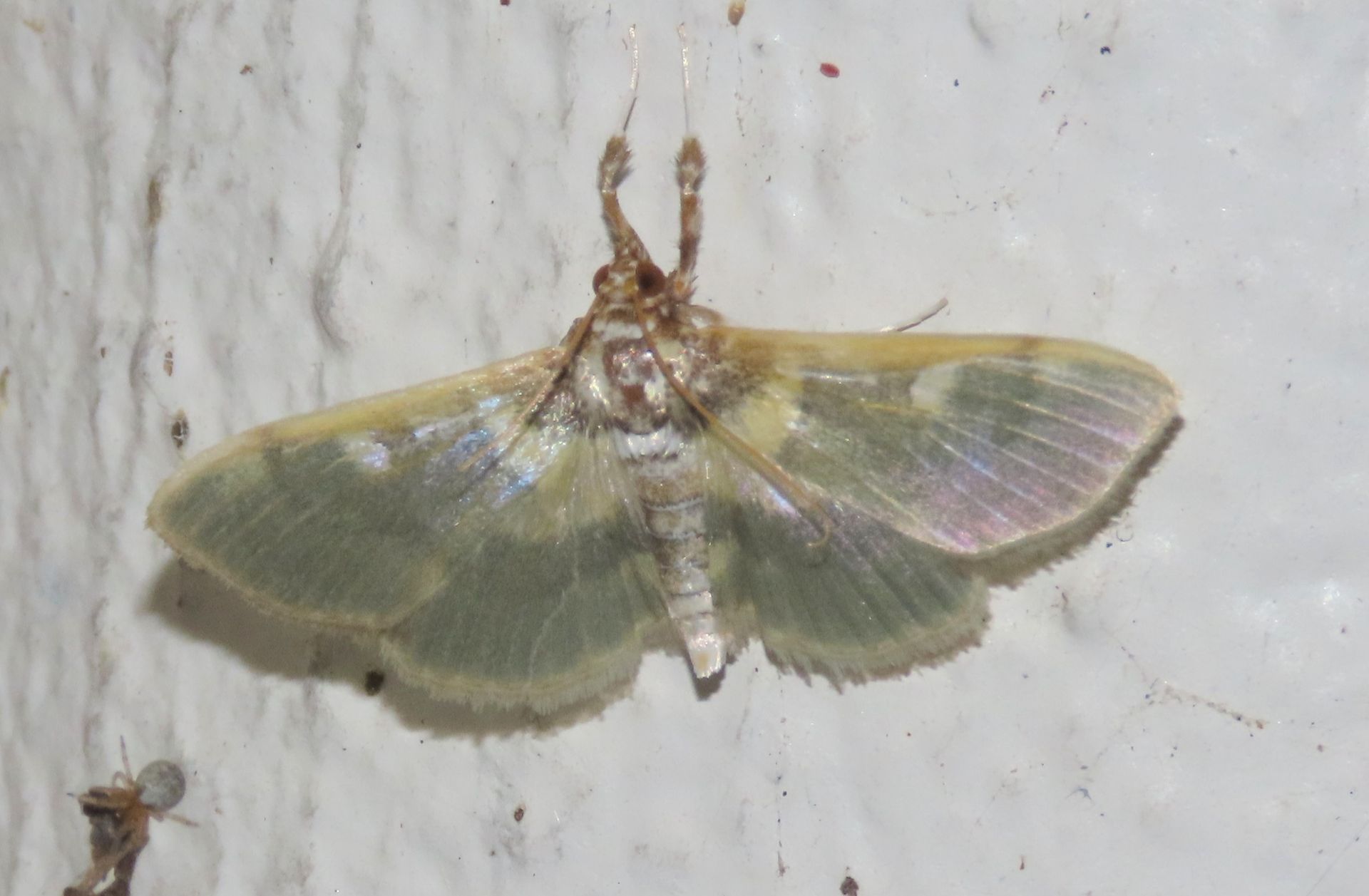
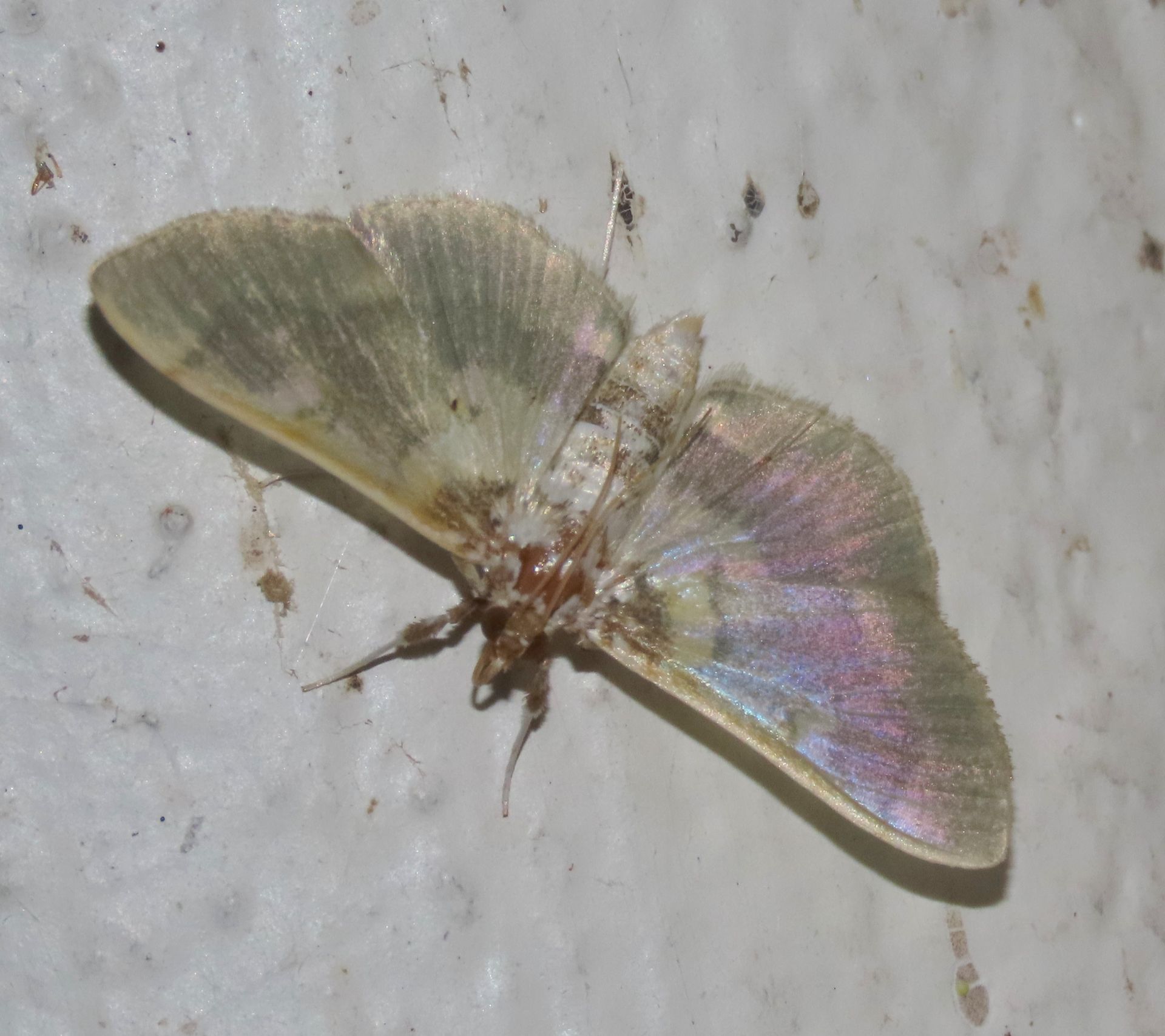
Apilocrocis Moth (Apilocrocis brumalis)
This unusual pastel-colored moth is mostly pale olive with a yellow basal area and costa. The ST area can appear a lighter shade of olive, and it often shows a purplish sheen. Also found along the Coastal Bend. Recorded April to May, with records in October.
Pyralids
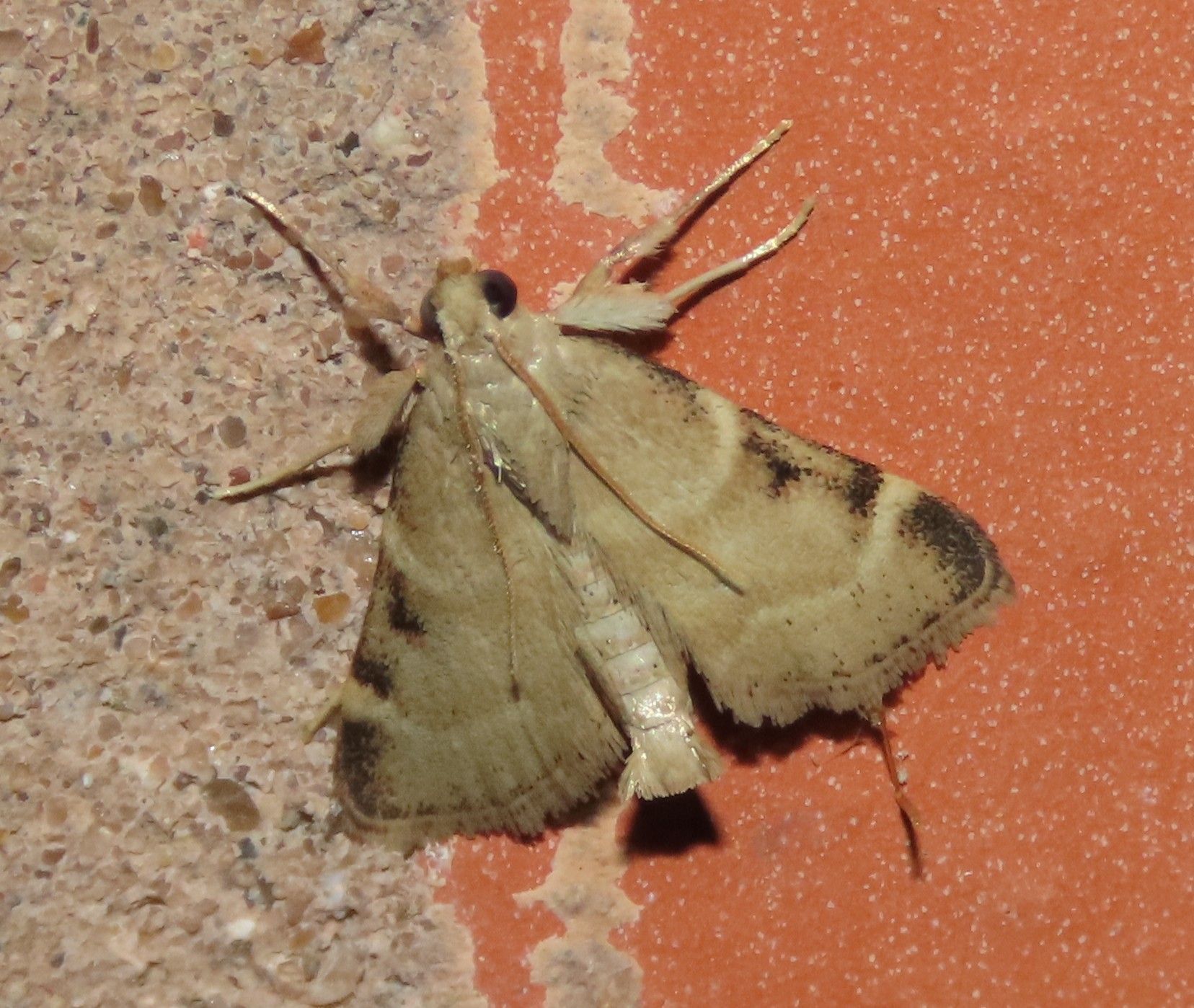

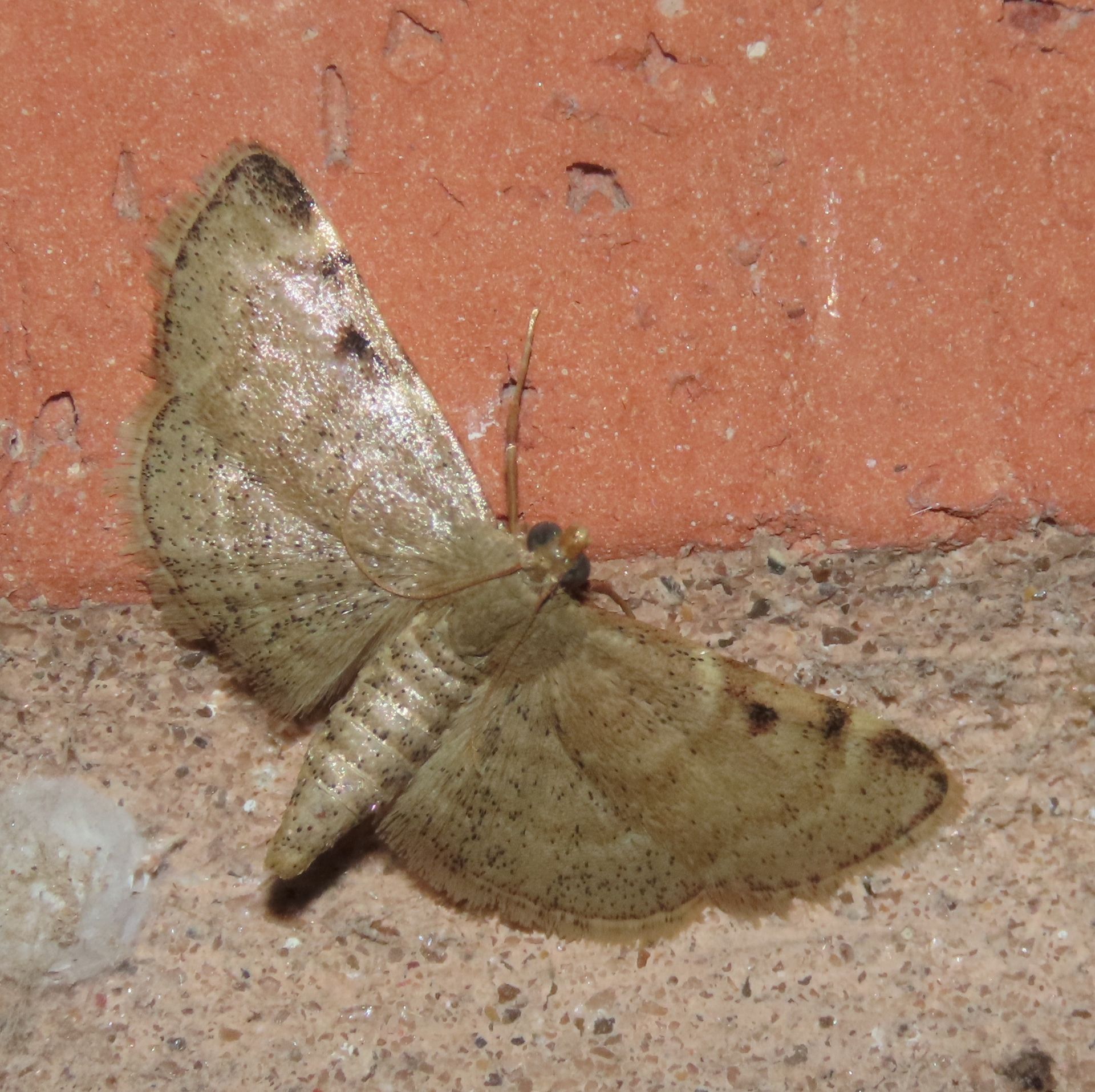
Rickard's Hypsopygia (Hypsopygia n. sp. 2)
Another undescribed species, this bug was discovered by Mike Rickard, a local lepidopterist, in 2012, hence the coined name! Straw-colored with paler AM and PM lines, the black squares along the costa apparently are diagnostic. Moths in this genus are often known as Hayworms. Recorded February to November
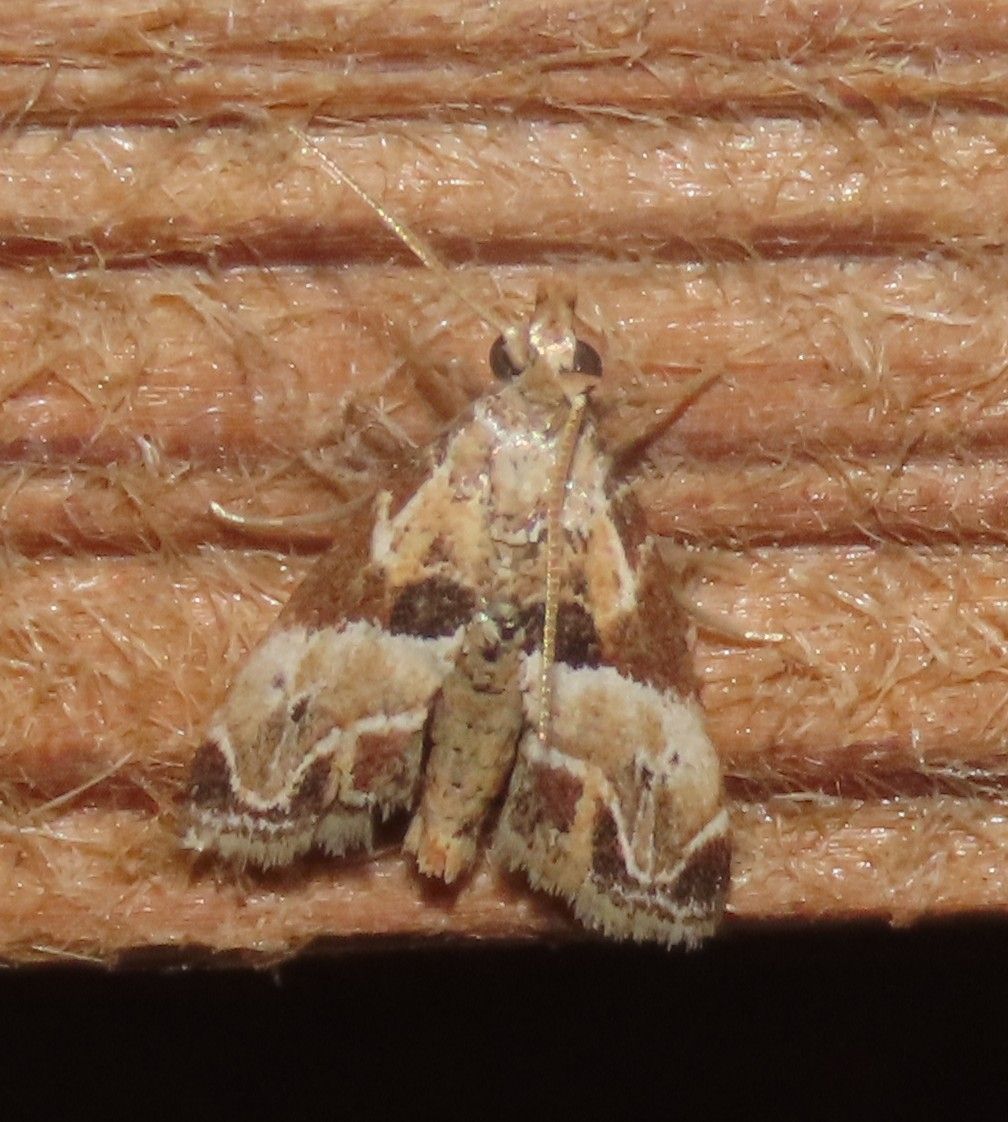
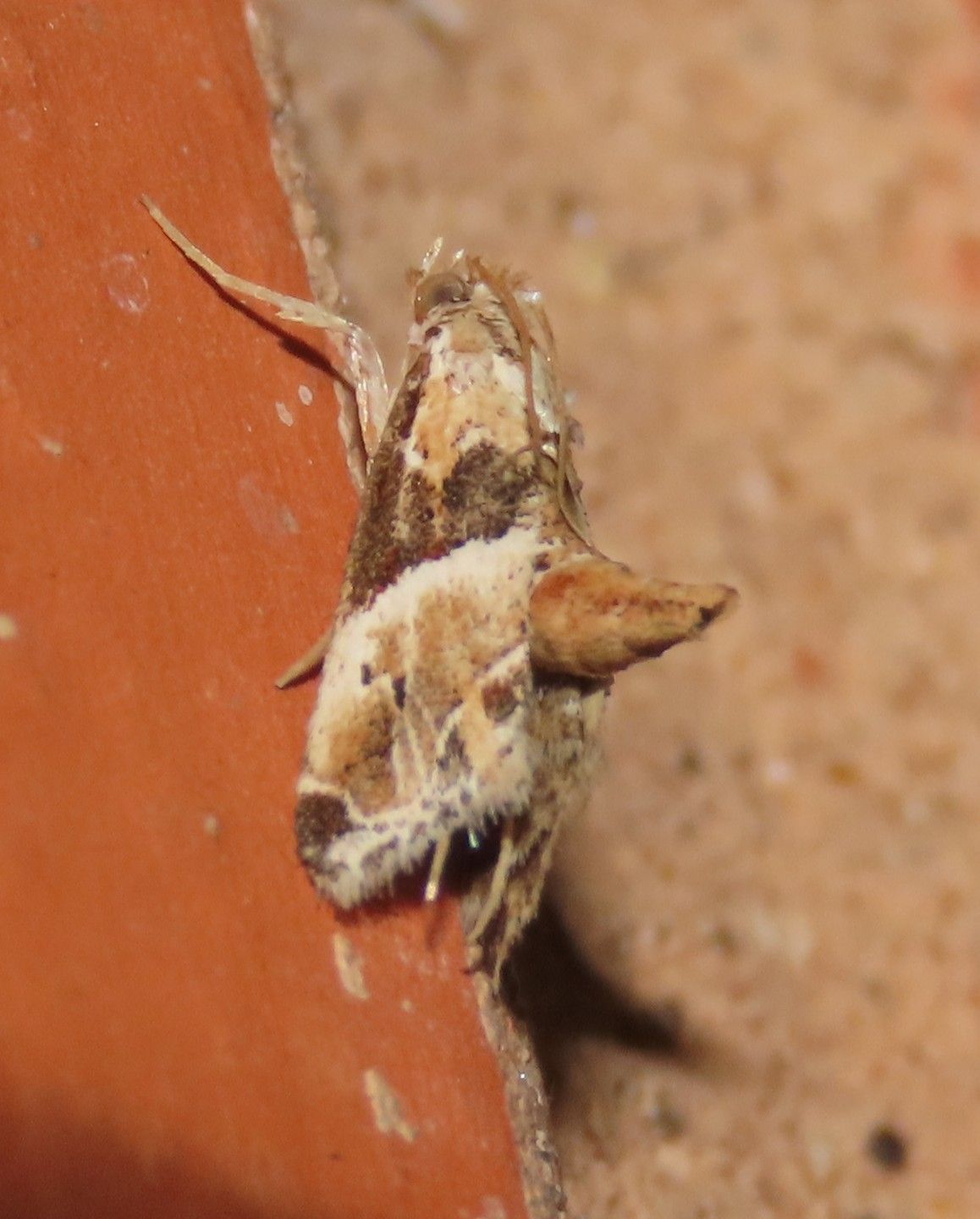
Honeysuckle Moth (Neodavisia melusina)
Straw-colored overall with a dark rusty median band and ST area. The median band widens at the costa, and the sinuous ST line makes a dip towards the terminal line. Two small discal spots sometimes show thin pale streaks running towards the ST line. MPG shows one record in the Hill Country. Recorded April to October.
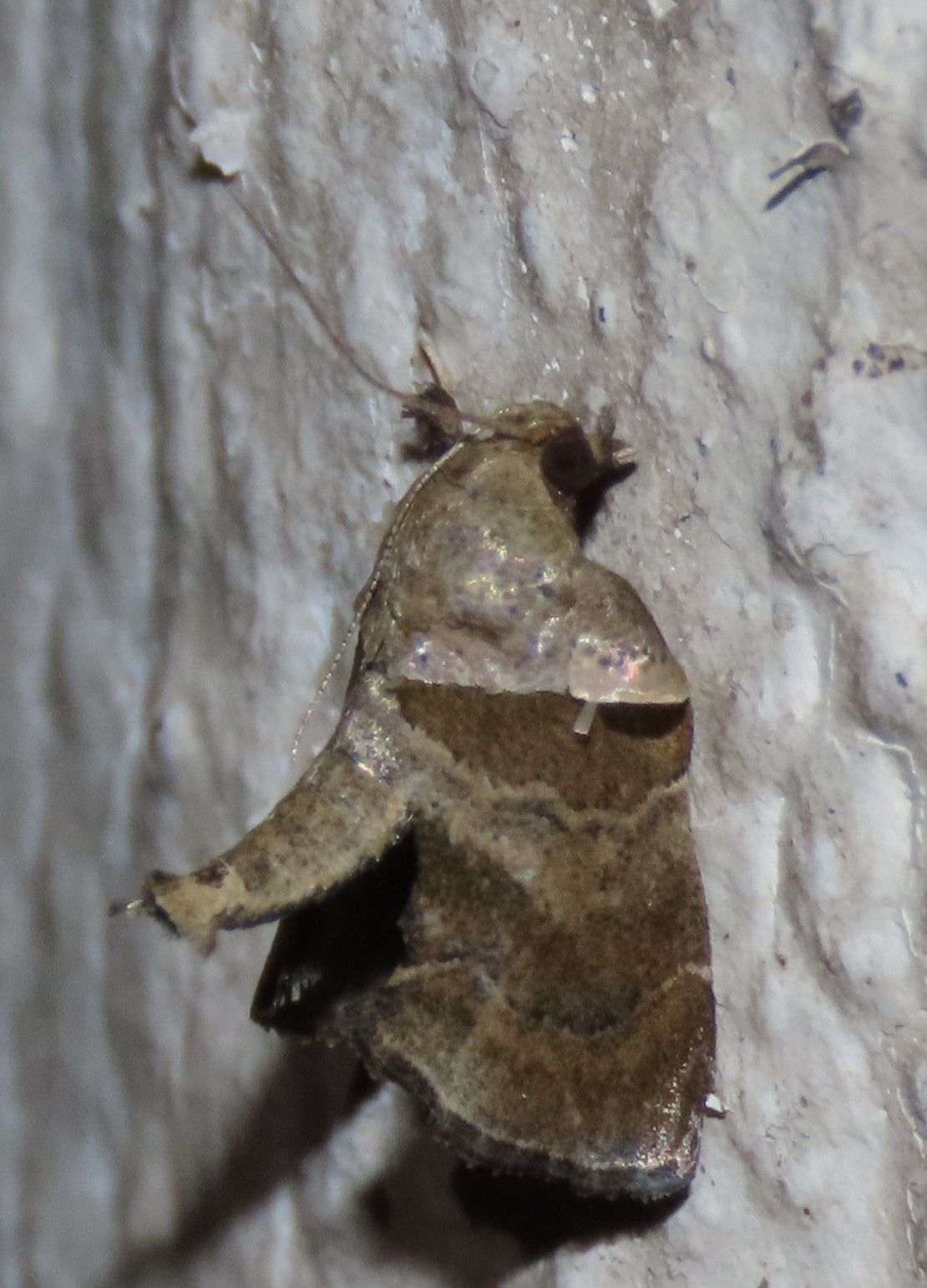
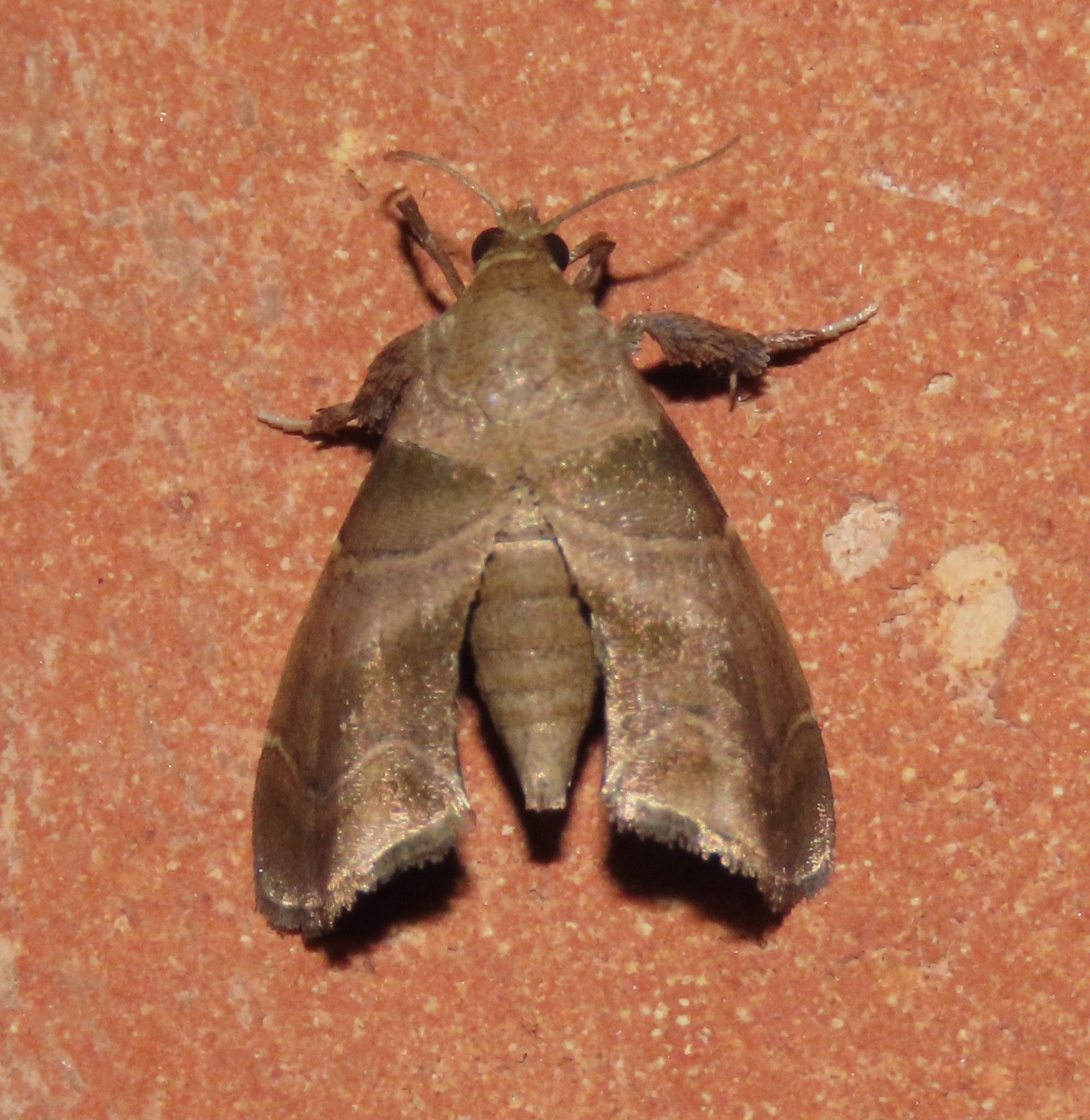
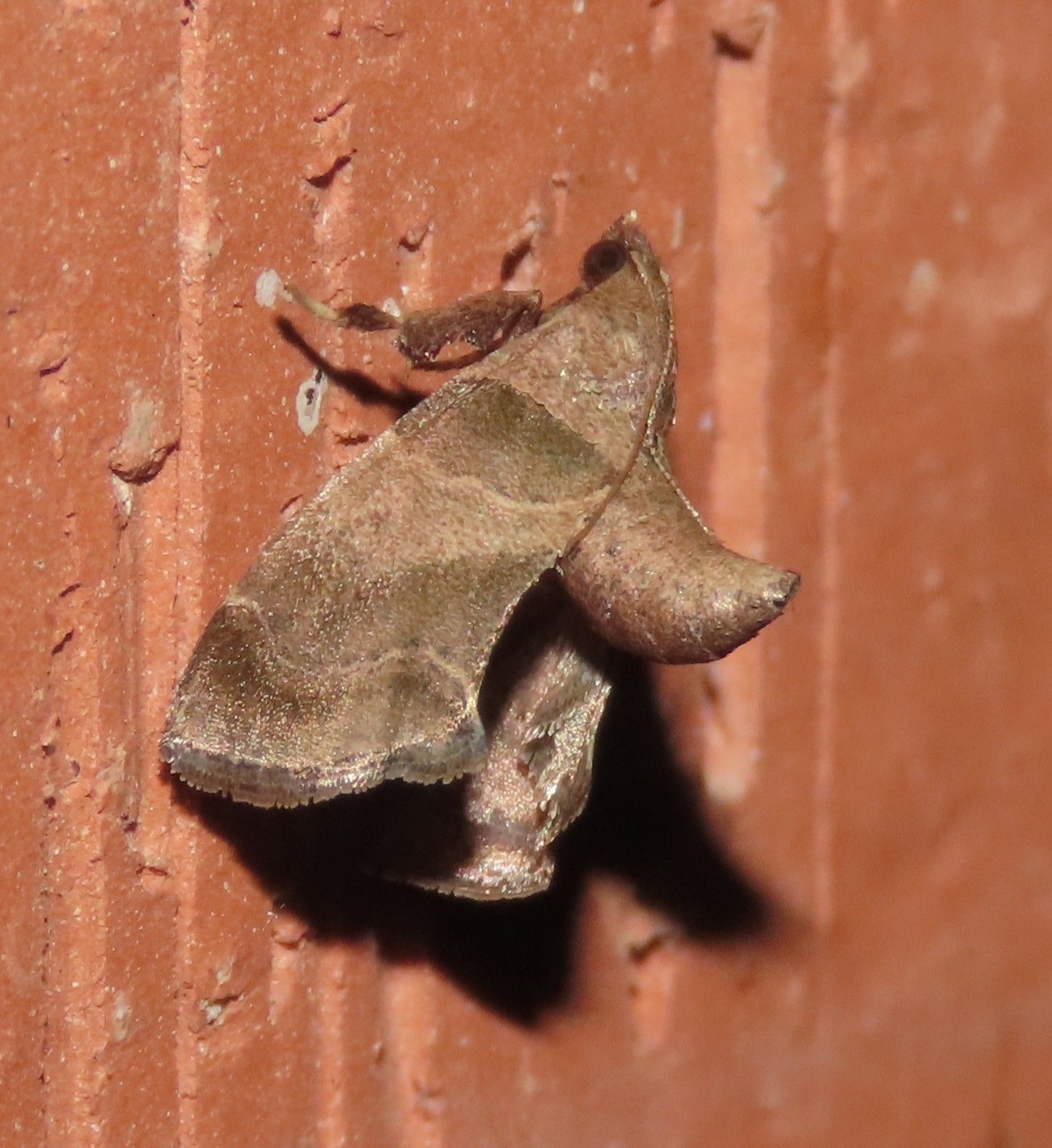
Aucta Tosale (Tosale aucta)
Superficially resembles a button moth with its paddle-shaped wings and raised abdomen, but this light brown moth has a thick olive AM band and shading in the distal half of the forewing. The male (left) has a cup-like fold in the forewing. Recorded April to August. The Dimorphic Tosale (Tosale oviplagalis) is very similar, but with a more contrasting AM band; MPG shows no records for South Texas.
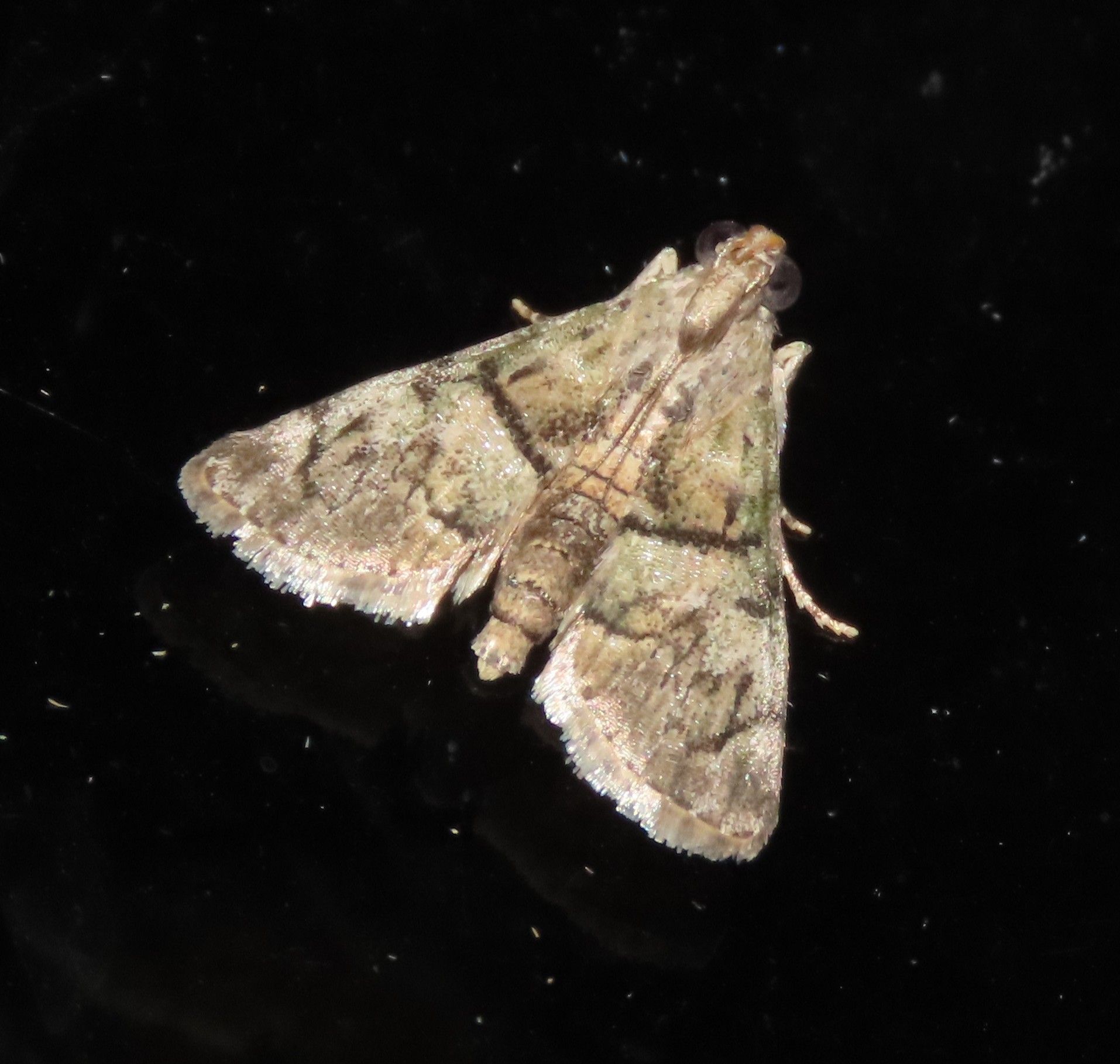
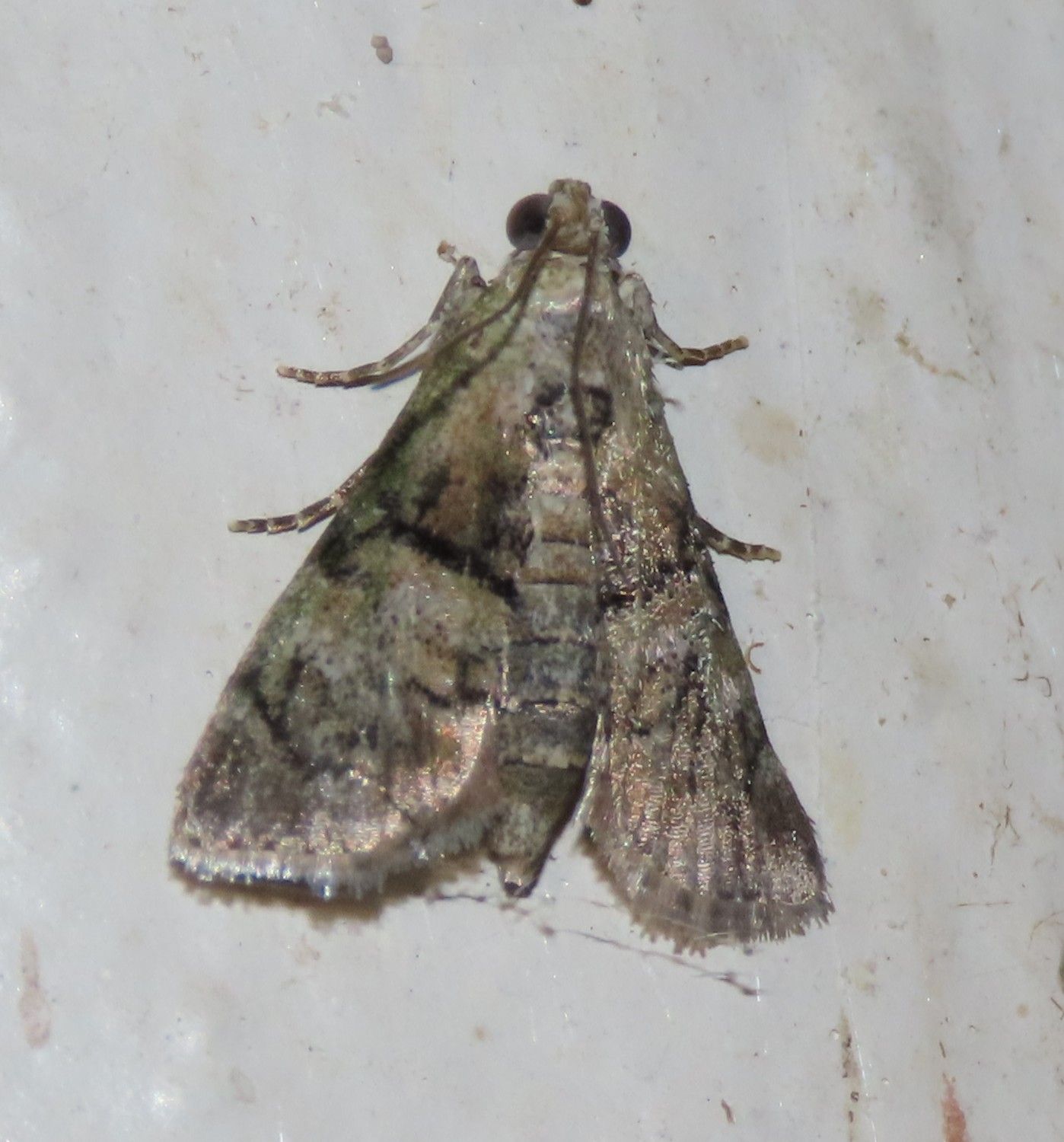
Black-shouldered Macalla (Macalla glastianalis)
A small, greenish-tinted moth with a contrasting, straight black AM line, and a wildly meandering PM line that is more obscured. The basal area has a few black streaks and shows darker shading on the upper margin of the AM line. Recorded June to July, with one record in September.
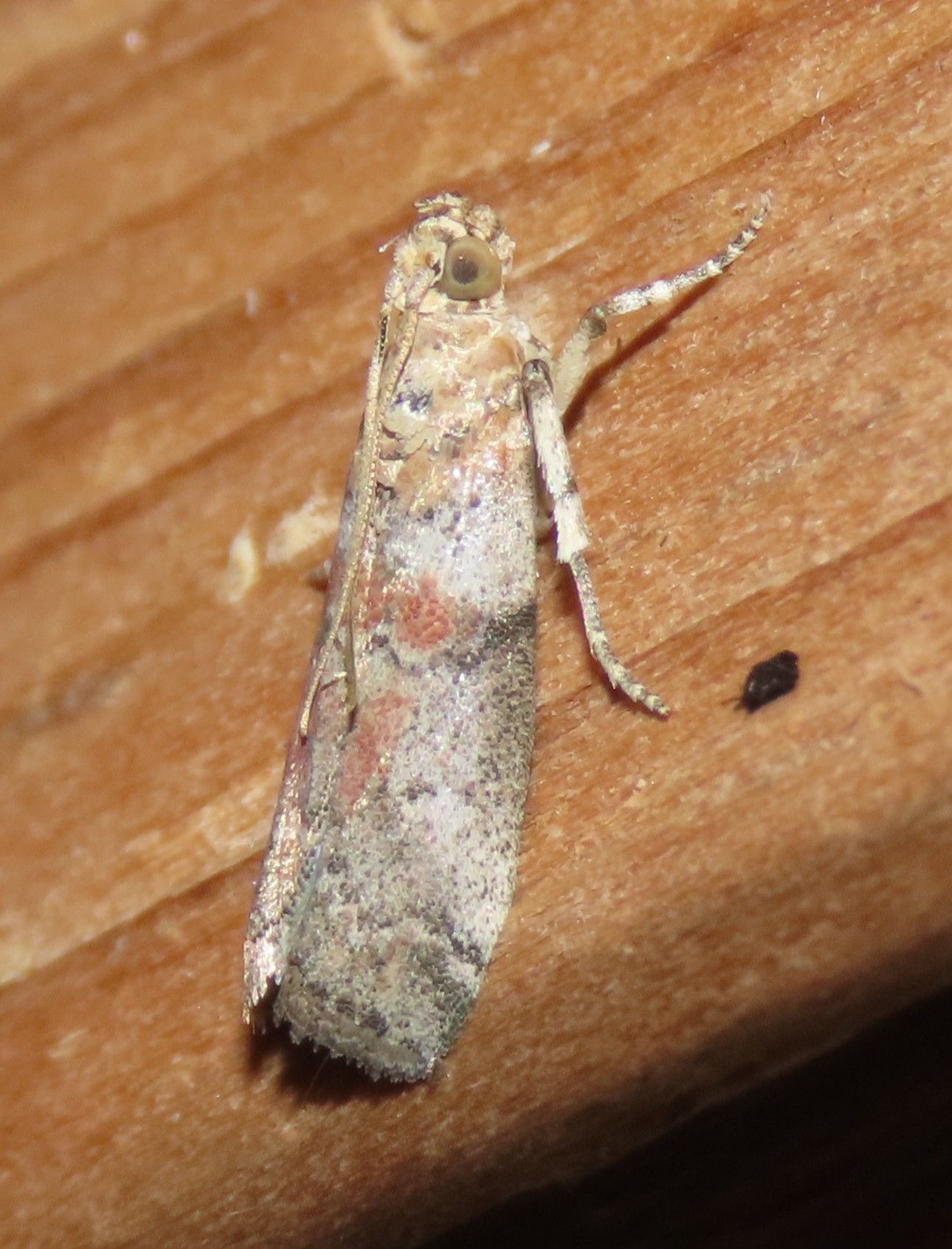
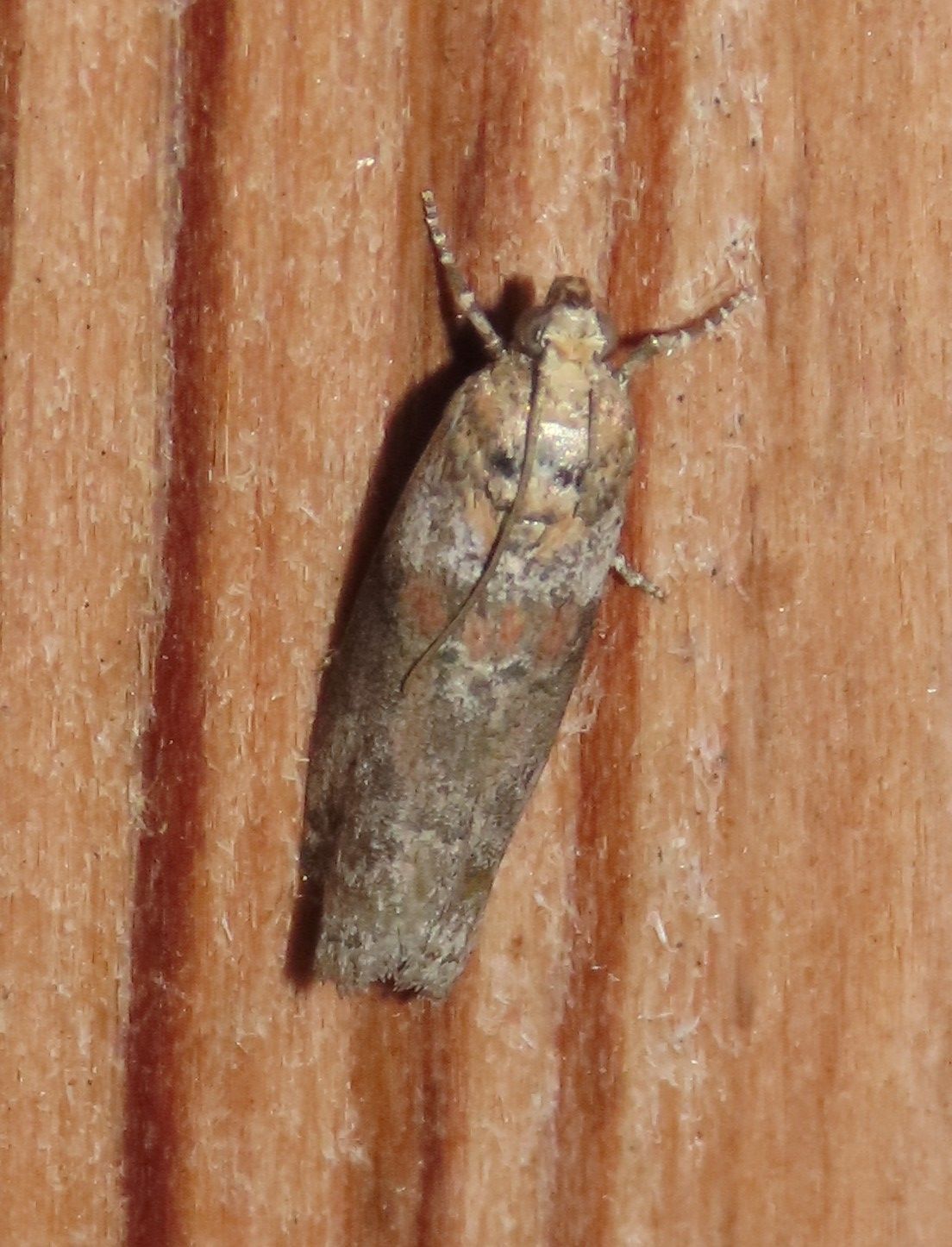
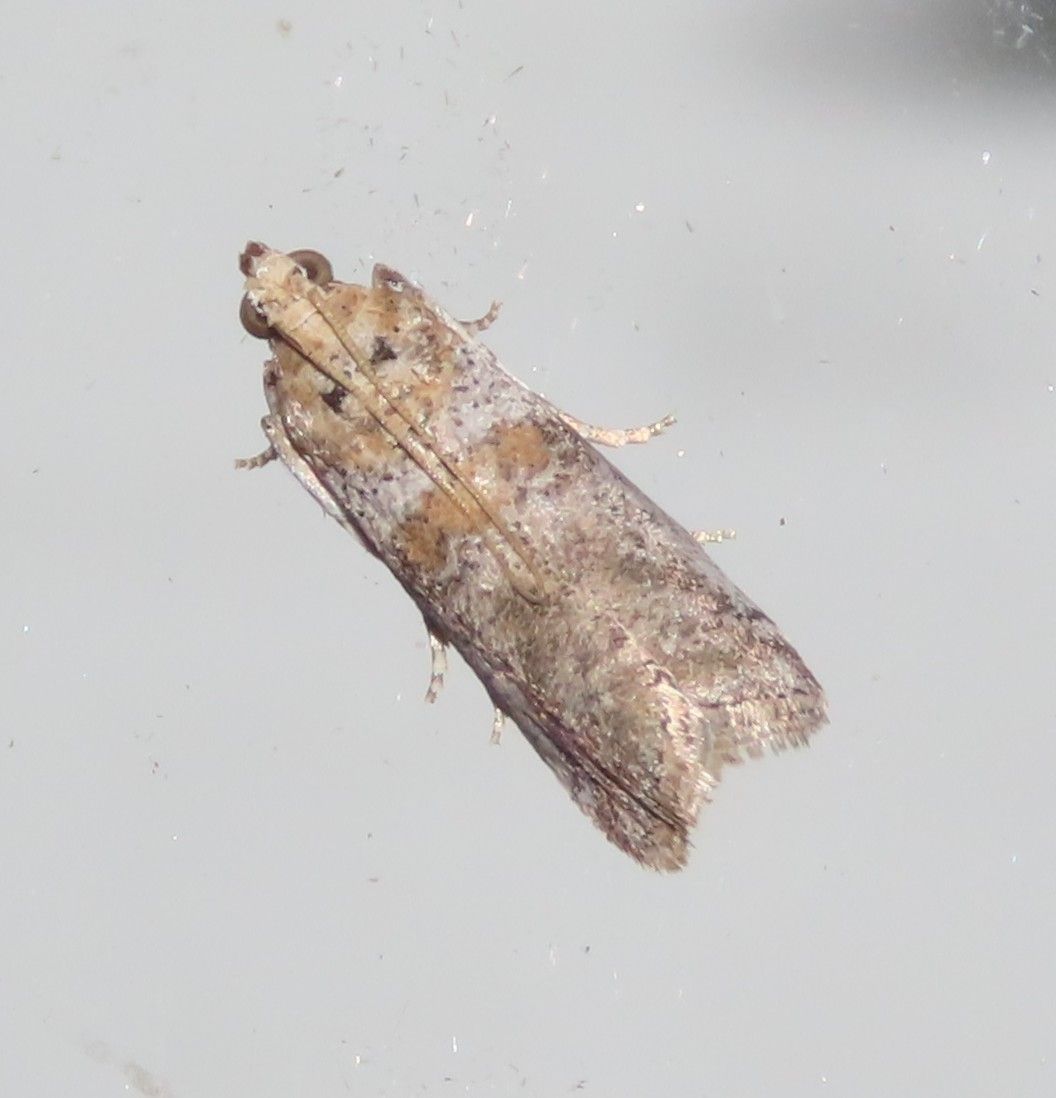
Gilt-based Leafroller (Sciota gilvibasella)
This silvery pyralid has a golden basal area with two black dots, and an ochre to cinnamon-colored (sometimes quite reddish) AM band, bordered on the lower edge with a wavy black-and-white line. The distal half of the forewings has darker shading often shaped like a wedge, but sometimes the whole area is darker, as in the center bug. MPG only shows LRGV records for this moth, but it's apparently been recorded up the coastal bend as well. Recorded February to May, with records in October.
